Key in a search term below to search our website.
Key in a search term below to search our website.
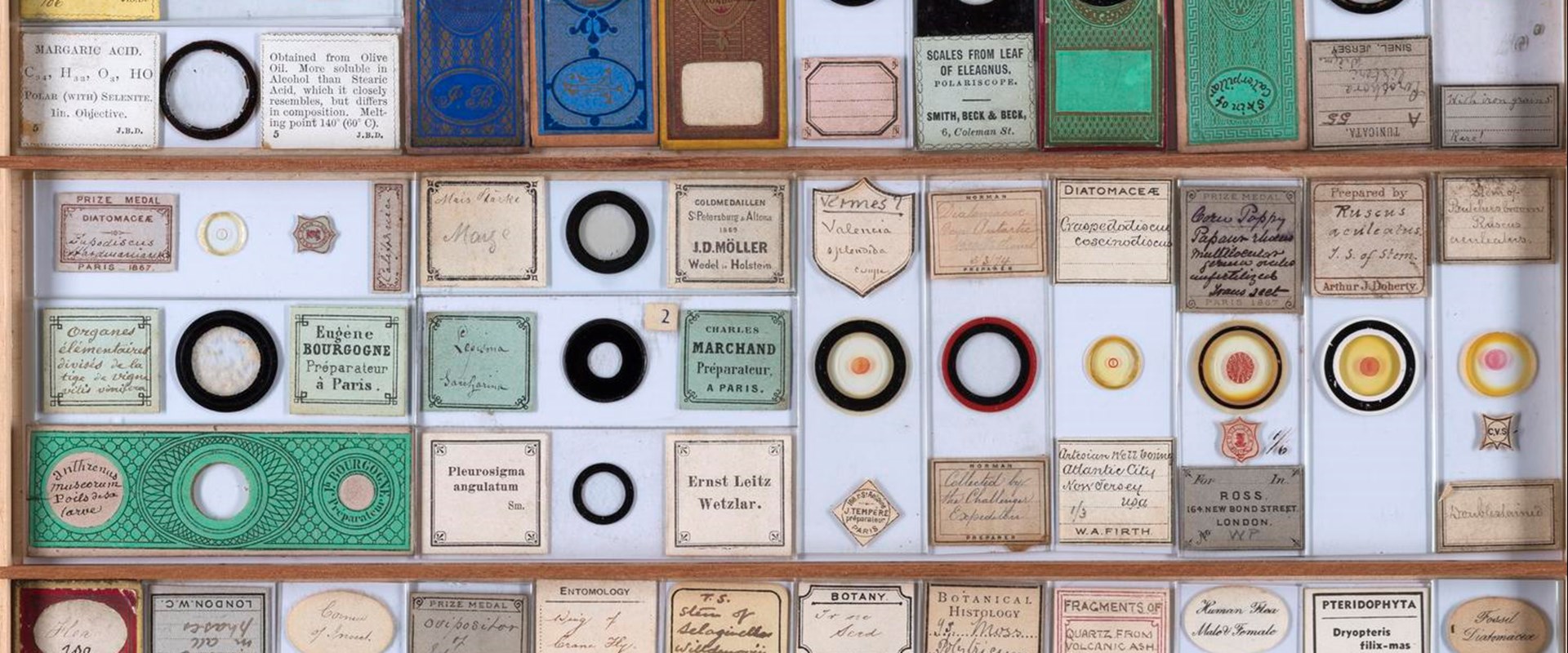
In Victorian Britain, the microscope was a portal to new micro-worlds. It was used for rigorous empirical research on nature and to inspire fanciful ideas about mysterious magical worlds.
Some specimens lent themselves to be investigated as whole objects. Yet, some specimens need to be made durable, prepared and preserved for research under the microscope.
This was a difficult process and didn't always have a satisfactory outcome. As microscopes became increasingly popular, so did companies that specialized in slide preparation.
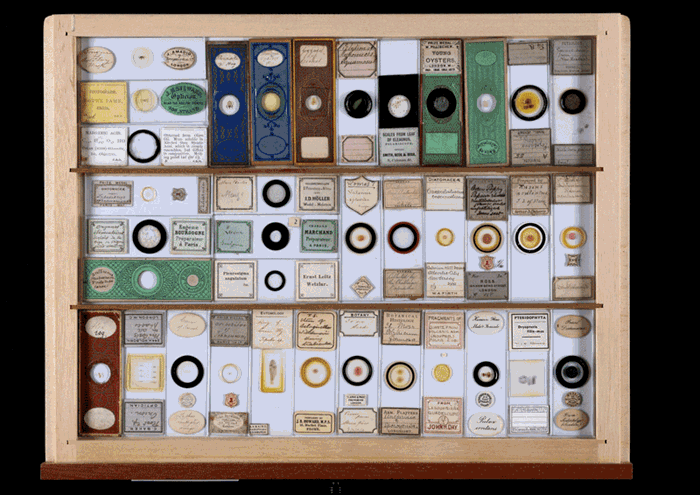
Selection of professionally made and homemade microscope slides, 19th century.
These professional slide mounters supplied prepared slides and slide preparation tool boxes. They also often offered unmounted specimens, dry or fresh, with explanatory notes for the preparation process.
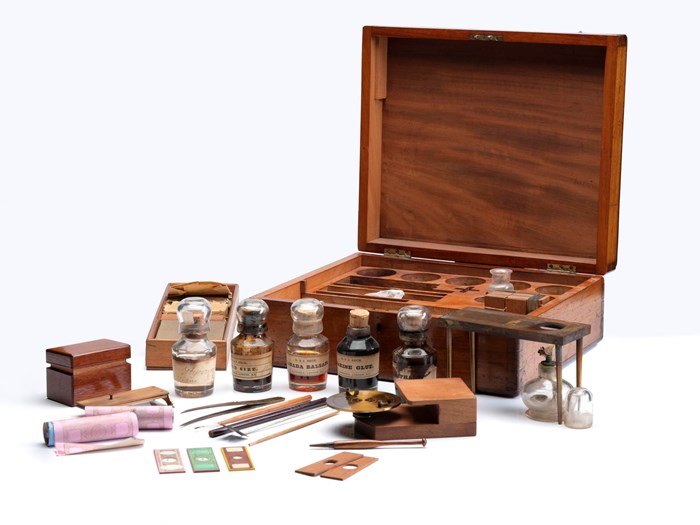
Microscope slide preparation set in a mahogany case, made by R. and J. Beck, late 19th century. Museum reference: T.1981.49
This slide preparation set contains bottles of glycerin, gold size, Canada balsalm, asphalt and marine glue to preserve the specimens. There is also a spirit burner with stand, a slide turntable, glass cutter, diamond stylus, slide labels and various unused glass slides.
The microscope permanently changed people's relationship with nature. A drop from the pond or even some tea could reveal a true ‘monster soup’ as shown in this satirical illustration.
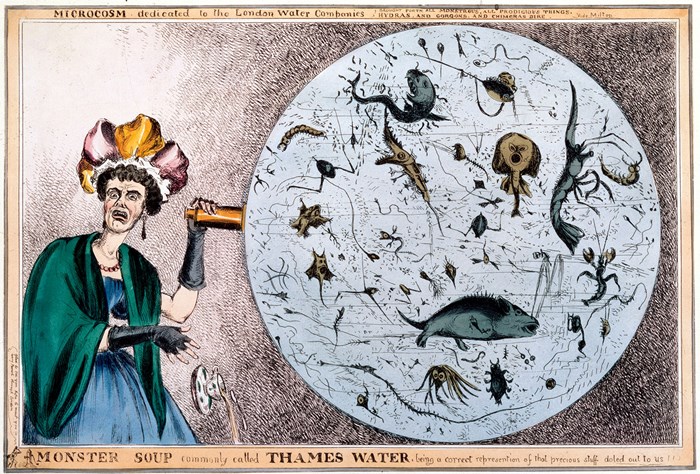
'Monster Soup' satirical engraving showing a lady discovering the quality of the Thames water, by William Heath (1828) © Science Museum Pictorial / Science & Society Picture Library.
Microscopic images helped scientists and artists alike, with scientists developing knowledge of the natural world and artists using this as a source of inspiration.
It is no coincidence that during the high craze of microscopy, alongside a more detailed description of insects, imaginative depictions of fairies appeared with detailed and colourful butterfly wings.
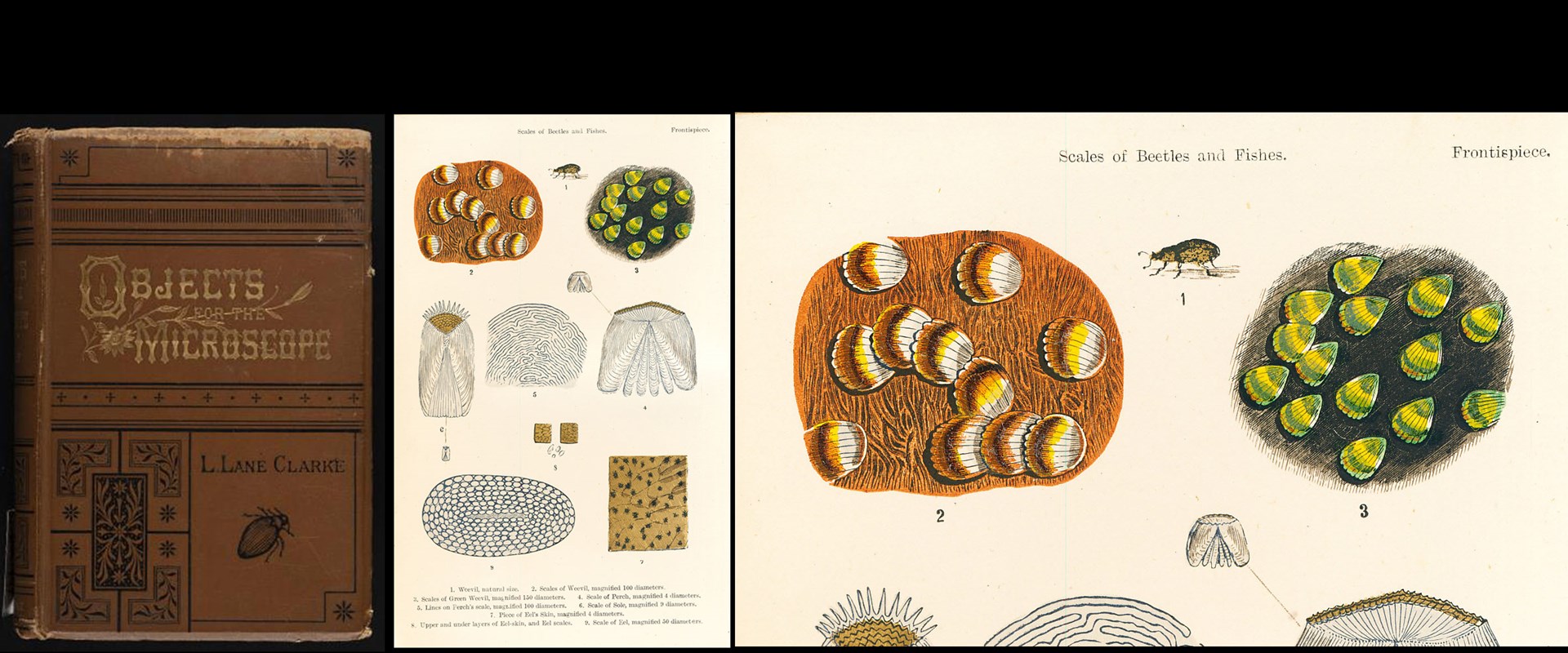
Cover and page from 'Objects for the Microscope' by Louisa Lane Clarke (1887)